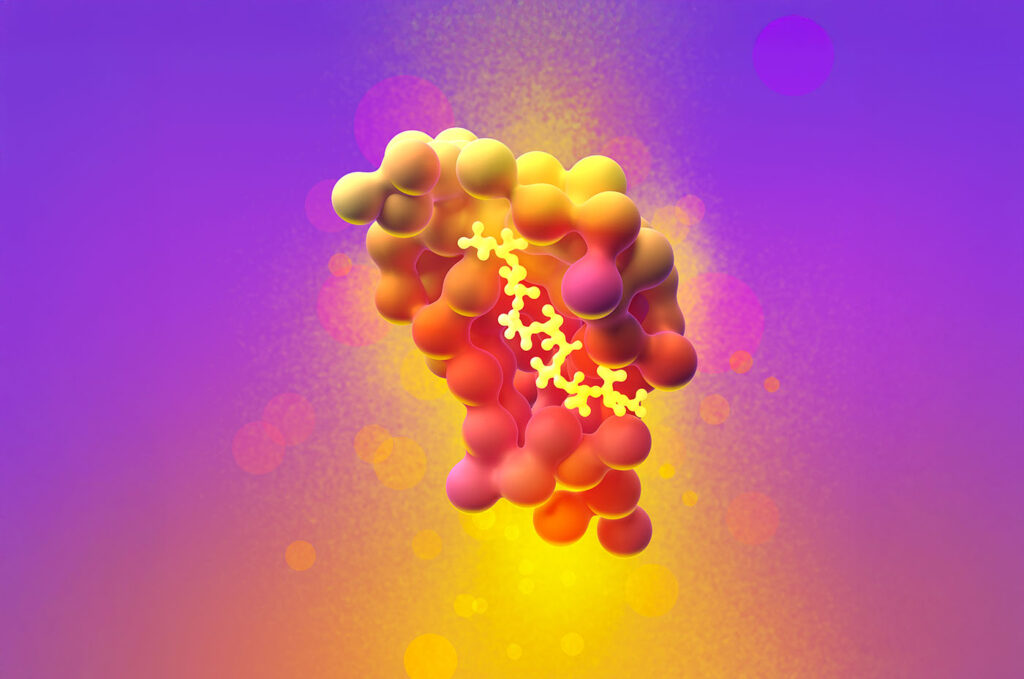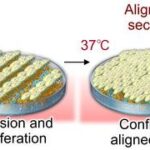Nucleic acid-based therapeutics, including antisense oligonucleotides (ASO), small interfering RNA (siRNA), messenger RNA (mRNA), immunomodulatory DNA/RNA, and gene-editing guide RNA (gRNA), hold great promise for treating a wide range of diseases. The success of these therapeutics, however, depends on delivery technologies that improve their stability, facilitate internalization, and increase their ability to target the right tissue and cells.1–3
Lipid nanoparticles (LNPs) have emerged as a key delivery technology, especially for mRNA vaccines and gene therapies. They protect nucleic acids during delivery and enable effective cellular uptake, but their applications have largely been limited to the liver, where LNPs accumulate when administered systemically.4 Enabling delivery to other organs requires screening numerous mRNA-LNP formulations to identify candidates that can be delivered to and produce high levels of therapeutic protein within the correct tissue, a time- and labor-intensive process.
This tutorial describes the use of Next-Gen Protein Sequencing™ (NGPS™) with protein barcoding on the Platinum® Pro instrument to accelerate in vitro and in vivo mRNA-LNP screening. This scalable, cost-effective approach offers single-molecule resolution and addresses inefficiencies in existing workflows.
Screening mRNA delivery and expression
The general approach involves designing protein barcodes, which are genetically encoded short amino acid sequences that can be added to protein-coding DNA. These barcodes are crafted to be highly distinguishable and sequenceable, allowing the sequencing algorithm to easily differentiate between candidates.5 When coexpressed with a purification tag and cleavage sites, these barcodes facilitate the release and sequencing of only the barcode of interest, enabling the selection of proteins for engineering, therapeutic delivery, and screening applications. Once proteins are selected, unique barcodes associated with each expressed protein can be identified and quantified with single-molecule resolution using NGPS6 on the Quantum-Si Platinum Pro benchtop protein sequencer (Figure 1).

Current methods, such as next-generation sequencing (NGS), primarily detect delivery but do not directly assess expression. In contrast, this approach offers the ability to conduct multiplex pooled screens with direct protein-level readouts, addressing a significant challenge existing technologies face. As a result, rapid high-throughput screening is enabled for a wide range of nanoparticle chemistries and formulations. This advancement allows for the accelerated identification of cargo and delivery systems with unique targeting capabilities for extrahepatic tissues, surpassing the speed of conventional methods.
Barcode design
Quantum-Si has optimized barcode constructs to enable efficient enrichment and recovery of barcodes customized for the gene of interest. A recent validation study describes experiments performed to confirm the sequenceability of a set of eight barcodes, assay sensitivity, and determine the limit of detection in vitro.6
Barcode constructs were designed to enrich barcoded proteins expressed in cells or tissues efficiently. These constructs utilize readily available affinity tags for a single-step reaction and cleavage that can be completed in less than four hours. Each construct (Figure 2A) includes an N-terminal FLAG tag, a poly(GS) linker, the protein barcode sequence, a sortase recognition motif (LPETG), and an optional C-terminal His tag.7

In mRNA-LNP research, protein barcodes are attached to mRNA constructs, which are then packaged into LNPs. These mRNA-LNP complexes can be introduced into cells or injected into animal models, where they are subsequently expressed (Figure 2B). The cells or tissues are extracted and barcoded protein-enriched via the FLAG tag. The peptide barcodes are modified for immobilization on the sequencing chip through a sortase reaction and are then cleaved from the FLAG beads and the protein of interest using LysC digestion. The recovered protein libraries can either be loaded for sequencing or stored at −20°C.
The Platinum® Barcoding Kit provides the necessary reagents to prepare protein barcode libraries for sequencing using the Platinum Pro Next Generation Protein Sequencer.
Using barcodes to detect mRNA-LNPs
The following study demonstrates the feasibility of using protein barcodes to screen for the delivery, uptake, and expression of specific mRNA constructs. These experiments tested mRNA constructs encoding protein targets coupled to barcodes and delivered via LNPs in vitro and in vivo.
For the in vitro study, an mRNA construct encoding the p58 protein and a unique barcode was encapsulated in an LNP and transfected into HEK293 cells. After the delivery, cell lysates were prepared, and the target protein was purified. Subsequently, the barcodes were cleaved and sequenced using NGPS. Analysis of the cell lysate from HEK293 showed that a single barcode was identified with high confidence in the Platinum Pro sequencing data (Figure 3). No additional high-confidence alignments were generated.

For the in vivo study, equimolar amounts of short sequences encoding five unique protein barcodes, including the barcode used in the previous in vitro experiment, were attached to mRNA constructs that encoded the same protein. mRNA-barcode constructs were encapsulated in LNPs of the same formulation and administered to a single mouse. The LNPs were taken up by the mouse’s tissues, where the mRNAs they carried were translated into the protein containing one of the five distinct barcodes.
Mouse spleen tissue was collected, and the target protein, including each of the five unique barcodes as separate fusions, was purified. The barcodes were then cleaved and sequenced using NGPS on the Quantum-Si Platinum Pro instrument. The relative abundance of each barcode was quantified to determine the protein expression levels.
Figure 4 demonstrates that all five barcodes were successfully recovered. The software generates graphs that display the barcode alignments, highlighting the reads aligned to all identified barcodes from a given run and ranking them from highest to lowest based on the number of alignments. For each barcode, the software details the number of reads that aligned successfully to the reference, with a FDR of less than 0.05.

Conclusion
Results from these experiments demonstrate the effectiveness of using protein barcodes combined with Platinum Pro single-molecule protein sequencing for multiplexed mRNA-LNP screening using in vitro and in vivo models. This approach offers significant advantages over mass spectrometry for decoding protein barcodes. Unlike mass spectrometry, NGPS features user-friendly workflows on a compact benchtop instrument. NGPS distinguishes peptides based on the recognition of specific amino acids rather than their mass-to-charge ratio, enabling researchers to create short, relatively uniform, and highly sequenceable barcodes.
By improving screening efficiency and enhancing candidate selection, Platinum Pro minimizes risks and accelerates the development of effective mRNA-based therapies.
Meredith L. Carpenter, PhD, is the Head of Scientific Affairs at Quantum-Si
References
- Kulkarni JA, Witzigmann D, Thomson SB, et al. (2021). The current landscape of nucleic acid therapeutics. Nat. Nanotechnol. 2021;16(6):630-643. doi:10.1038/s41565-021-00898-0.
- Sun X, Setrerrahmane S, Li C, Hu J, Xu H. Nucleic acid drugs: recent progress and future perspectives. Signal Transduct Target Ther. 2024;9:316. doi:10.1038/s41392-024-02035-4.
- Anke S, Jörg V. RNA-based medicine: from molecular mechanisms to therapy. EMBO J. 2023;42(9):e114760. doi:10.15252/embj.2023114760.
- Wei Y, Quan L, Zhou C, Zhan Q. Factors relating to the biodistribution and clearance of nanoparticles and their effects on in vivo application. Nanomedicine (Lond). 2018;13(13):1495-1512. doi:10.2217/nnm-2018-0040.
- Karekar N, Cahn AR, Morla-Folch J, et al. Protocol for the development of mRNA lipid nanoparticle vaccines and analysis of immunization efficiency in mice. STAR Protoc. 2024;5(2):103087. doi:10.1016/j.xpro.2024.103087.
- Chinnaraj M, Huang H, Hutchinson S, et al. Protein barcoding and next-generation protein sequencing for multiplexed protein selection, analysis, and tracking. bioRxiv. Published online 2024. doi:10.1101/2024.12.31.630920.
- Kumano S, Tanaka K, Akahori R, Yanagiya A, Nojima A. Using peptide barcodes for simultaneous profiling of protein expression from mRNA. Rapid Commun Mass Spectrom. 2024;38(6):e9867. doi:10.1002/rcm.9867.




